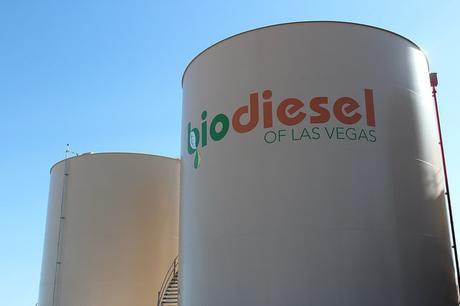Biodiesel refers to a vegetable oil – or animal fat-based diesel fuel. It’s usually made by reacting lipids in the form of vegetable oil, soybean oil or animal fat with some alcohol, mostly methanol.
This biodiesel can be used in any standard biodiesel engine, on its own or mixed with petrodiesel in many proportions.

In the modern world when gas is a necessity, and prices are rising steadily, biodiesel has a strong advantage over others. In addition to it being more eco-friendly than fossil fuels it can be made at home with few simple steps. It’s best to use fresh oil, but waste cooking oil works fine too. The home environment has some, but to maximize the effect, you would want to use waste cooking oil from restaurants. People have begun eating out more and more in recent years, and this shift made restaurants work in fifth gear. With more meals being made, naturally, there would be more waste ingredients, including our cooking oil.
On average, during a year, a person generates 9 pounds of used cooking oil for his meals. This translates to enormous amounts. Obviously, not all of this oil is turned into biodiesel. However, according to Londonwasteclearance.org.uk, a waste disposal company that thrives in removing cooking oil from London restaurants, the amount of oil they dispose of can be used to provide biodiesel for half of the city’s needs.
The Process
Ingredients:
- 1l of vegetable oil (example: soybean oil, corn oil). First and most important thing is of course the oil.
- -3.5 grams (0.12 oz.) of sodium hydroxide which is known as lye. You can find it in some drain cleaners. Just make sure that the label reads sodium hydroxide and not calcium hypochlorite.
- 200 milliliters (6.8 fl. Oz.) of methanol.
- Blender with a low-speed option. Another note with the blender, you should not use it for regular cooking anymore. Also switch out the plastic cup for a glass one, because methanol can react with the plastic.
- Digital scale. You need to measure exactly 3.5 grams (0.12 oz.) of lye.
- Glass container marked for 200 milliliters (6.8 fl. Oz.). If your container isn’t pre-marked, you can mark it manually by using a measuring cup, then marking the outer part of the container.
- glass or plastic container marked for 1l (1.1 quarts)
- wide mouth glass or plastic container able to hold at least 1.5l (2 quart pitchers work well)
- safety glasses, gloves, an apron, and face mask
Safety Notes
Most of the chemicals used here are highly toxic and can cause severe chemical burns or worse. Inhaling some vapors can also be very dangerous. Always make your biodiesel in a ventilated area. If you spill chemicals on your hands, immediately wash it off with water. Read the warning labels for all products before using them for maximum safety.
Steps to Make Biodiesel
Before you start the process of making biodiesel, make sure the room temperature is at least 70 degrees Fahrenheit. The chemical reaction will not finish if the temperature is lower than that.
- Pour 200ml Methanol into the glass blender pitcher
- Start the blender at low speed.
- Slowly add 3.5g of Sodium Hydroxide (This reaction produces sodium methoxide which loses its effect unless it’s used immediately)
- After the mixture has completely blended (it takes around 2 minutes) add 1l of vegetable oil
- Continue blending for 20 to 30 minutes
- Pour the mixture into wide-mouth containment. The liquid will start to separate into layers. The bottom one will be Glycerin, which you can then use for other reactions, the top one will be your Biodiesel. It will take hours for the mixture to separate completely.
- The final step is to pour the biodiesel into your desired containment or use a pump to pull off the biodiesel of the glycerin.
And there it is. You made your own Biodiesel out of some oil and other home found ingredients.
Blends
Blends of biodiesel and hydrocarbon-based diesel are products mostly used in the retail diesel fuel marketplace. Worldwide, a “B” factor system is in place. It states how much biodiesel is in the mixture.
- Blends with 100% biodiesel are known as B100
- 20% biodiesel and 80% petrodiesel is B20
- 5% biodiesel 95% petrodiesel is B5
- 2% biodiesel 98% petrodiesel is B2
Blends with 20% or lower can be used in any engine without modifications (damage caused by these blends is not under warranty).
Interesting facts
In 2007 British Royal Train completed his first-ever journey using only B100 biodiesel. First passengers were Prince Charles and James Hygate (managing director of Green Fuels, company that supplied the train with biodiesel). Royal Train has been active ever since using only B100 biodiesel.
Czech jet aircraft has completed a test flight completely powered by biodiesel. In November 2011 United Airlines did a first commercial flight using biodiesel. Unlike the train, this airplane used B60 blend.
There is a law in Massachusetts that dictates that at least 2% of the home used diesel is in fact biodiesel. According to the same law, by 2013 that percentage should rise to 5%. New York City has passed a similar law.
Conclusion
What makes biodiesel so good? First of all, you can make it at home. Second, it’s eco-friendlier than some other fuels. And then, there is the price. You can substantially decrease money spent on fuel if you make your own from vegetable oil or similar.

